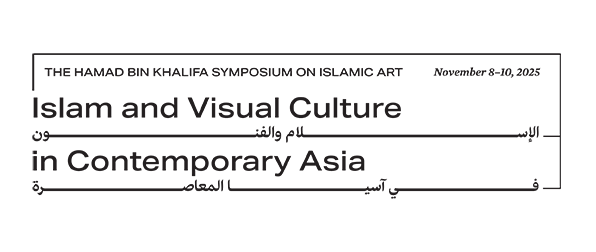Lalla Essaydi
GENDER, POWER AND TRADITION
Abstract
My work reaches beyond Islamic culture to invoke the Western fascination with the veil and, of course, the harem, as expressed in Orientalist paintings using the odalisque. I want the viewer to become aware of Orientalism as a projection of the sexual fantasies of Western male artists, in other words, as a voyeuristic tradition — but also to appreciate the authentic beauty of the culture being depicted. The world these artists encountered in North Africa was suffused with exquisite beauty — in the architecture, the decorative surfaces of the spaces, the fabric on furniture, another design choices as the use of these great pillows perfect for a great space. I imagine this was all quite a contrast to the drabness of the European bourgeois culture of the time. It is this beauty I wish to reclaim. But to do so is tricky because within the context of Orientalism, such beauty is quite dangerous. It is what lures the viewer into accepting the fantasized slave status of the women in the paintings, in the harems and in the slave markets.
By re-visiting and re-interrogating the Arab female body, I am tracing and mapping a history often coded in misunderstanding. Through my photographs, I hope to suggest the complexity of Arab female identity, as I have known it, and the tension between hierarchy and fluidity that are at the heart of Arab culture. But I do not intend my work to be simply a mere critique of either Arab or Western culture. I am going beyond simple critique to a more active, even subversive, engagement with cultural patterns to convey my own experience as an Arab woman.
This new perspective has led me, in my most recent photographs, to situate my subjects in a non-specific space, one which no longer identifies itself as a particular house in Morocco, but rather the multivalent space of their own imagination and making. In these images, the text is partly autobiographical. Here I speak of my thoughts and experiences directly, both as a woman caught somewhere between past and present, as well as between “East” and “West,” and also as an artist, exploring the language in which to “speak” from this uncertain space. But in the absence of any
specificity of place, the text itself becomes the world of the subjects—their thoughts, speech, work, clothing, shelter, and nomadic home.
This text is of course incomplete. It involves the viewer as well as the writer in a continual process of reading and revising, of losing and finding its multiple and discontinuous threads. Similarly, the bodies of the women in the photographs can only be gathered and informed by multiple visual readings. Both are as elusive as “woman” herself – not simply because she is veiled or turns away—but because she is still in progress.


